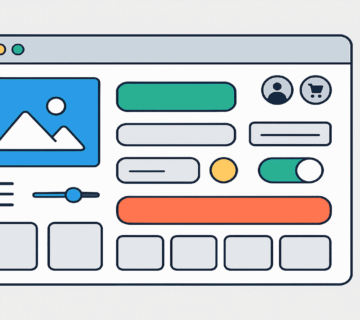How do you prepare your site for Google s Page Experience update ?
Understanding Google’s Page Experience Update
Google’s Page Experience Update is a core element that influences how websites are evaluated and ranked by search engines. This update aims to enhance the user experience by introducing specific criteria that affect how sites appear in search results. Page experience has become a key ranking factor, including metrics such as page load speed, usability, and mobile-friendliness—all essential to evaluating user experience.
One of the central metrics of this update is site speed. The faster a page loads, the better the user experience, which leads to longer visit durations and lower bounce rates. Google recognizes users’ desire for fast and efficient access to information and has therefore developed precise standards to measure speed.
Additionally, usability plays a significant role in making users feel comfortable while navigating a site. Features like intuitive navigation and a clear interface enhance the overall experience. The update also places a strong emphasis on mobile compatibility. With a growing number of users browsing the web via smartphones, Google now evaluates how well websites adapt to these devices. In this context, mobile-responsive design is no longer optional—it’s essential to delivering a satisfactory user experience.
Ultimately, auditing and optimizing your site for page experience metrics can directly impact your search engine rankings. Website owners must deeply understand these factors and adapt accordingly to gain better recognition from Google and increase their visibility.

Analyzing Your Website’s Current Performance
To determine your site’s readiness for Google’s Page Experience Update, start by analyzing its current performance using performance analysis tools. Popular tools like Google PageSpeed Insights and Lighthouse offer valuable insights into how users interact with your website and how quickly it loads.
Google PageSpeed Insights provides a score from 0 to 100 to assess your site’s performance. Higher scores indicate better performance and user experience. The tool also highlights strengths and weaknesses, identifying areas that need improvement—such as slow image loading or non-optimized content for various devices.
Lighthouse, another Google tool, offers comprehensive assessments across performance, accessibility, and SEO. After running a test, you’ll receive a detailed report highlighting issues such as time to first paint and overall load time, giving you a clear understanding of your current status. These findings are essential for identifying factors that directly impact the user experience.
By carefully reviewing these results, you can build a focused plan to optimize your site’s performance. Regularly checking for updates and best practices ensures that your site aligns with Google’s expectations. Balancing fast load times with rich, engaging content will significantly enhance the user experience—and by extension, your search rankings.
Improving Your Website’s Page Experience
Improving your site’s page experience is a fundamental part of a successful digital presence. It involves a series of measures that boost both site performance and user satisfaction. One of the most important steps is optimizing page load speed. Fast-loading websites improve user experience, reduce bounce rates, and increase the time visitors spend on your site.
To achieve this, start by optimizing files and reducing image sizes. Compress images and use modern formats like WebP to maintain quality while minimizing file size. You can also implement browser caching to ensure faster load times for returning visitors.
Another critical factor is implementing a responsive design. Your site must adapt seamlessly across devices—smartphones, tablets, and desktops. Responsive design enhances usability by allowing content to be easily accessed and navigated. Make sure to set an appropriate viewport so the layout scales correctly on all screen sizes.
Easy site navigation is also essential. Navigation menus should be clear and user-friendly, enabling visitors to find the content they’re looking for without hassle. Tools like sitemaps can help users quickly locate important pages and enhance the overall browsing experience.
Finally, tools like Google PageSpeed Insights and GTmetrix can be used to continually monitor performance and generate actionable suggestions. These tools offer deep insights into areas for improvement, helping ensure your site delivers an optimal user experience.

Future Steps and Ongoing Monitoring
Continuous monitoring and improvement are crucial to maintaining strong site performance amid Google’s evolving standards. Success in this environment depends on your ability to quickly adapt to changes in user experience expectations. After implementing UX strategies, begin tracking your website’s performance regularly using Google tools like Google Analytics and Google Search Console.
Google Analytics provides powerful features for monitoring visitor behavior, allowing you to track essential metrics like session duration and bounce rate. These insights help you identify areas that need improvement and adjust your strategies accordingly. Meanwhile, Google Search Console offers valuable information on how your site is indexed and ranked, helping uncover technical issues that may affect page experience.
It’s also essential to stay informed about future Google updates that could influence your site’s visibility. Use trusted resources such as Google’s official blogs or SEO communities to keep up with the latest changes. By doing so, you’ll be better positioned to adapt your website to new requirements and maintain your competitive edge.
In conclusion, continuous evaluation and adaptation to changes in user experience standards are key to your website’s long-term success. Regular performance reviews and timely improvements will strengthen your online presence and boost visitor satisfaction. This proactive approach ensures your site stays aligned with the demands of the modern digital landscape.








Exactly what every website owner needs to master — smart management leads to better performance and stronger results!